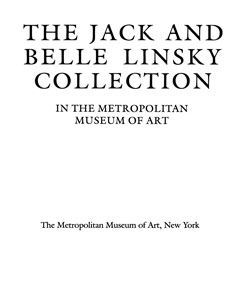Seated satyr with an inkwell and a candlestick
These two satyrs are part of the growing corpus of bronzes, outfitted as both inkwells and candlesticks, once associated with Riccio or his workshop but now considered to be more distant echoes of the artist’s influence. While there are three seated satyrs assigned to Riccio as autograph works, there are more than two dozen related bronzes that came out of different workshops operating at a remove from the master’s death in 1532—sometimes years, decades, even centuries later.[1] These types were first attributed to Riccio and his workshop by Wilhelm von Bode, followed by Leo Planiscig, who published The Met bronze (A) then in the Frey collection. In 1970, John Pope-Hennessy pointed to three distinct groupings for these seated satyrs, which were further delineated by Anthony Radcliffe in 1992 and discussed in depth by Alison Luchs and Dylan Smith in 2007.[2] More recently, Jeremy Warren provided a detailed catalogue of twenty-four examples that he categorized into four types.[3]
Both of these bronzes entered the Museum through the Linsky bequest in 1982. The first (A) belongs to group “c” of Warren’s typologies: seated satyrs placed relatively low to the ground, legs crossed, with a shell in the right hand and a candleholder in the left. In our bronze, the holder has broken off and has been replaced with what appears to be a moneybag of later facture. The satyr is ithyphallic, his left leg gracefully crossed over his right, and of an overall high quality, with locks of hair, on both hinds and head, delicately modeled in the wax. The bronze once belonged to the Marczibányi family, important Hungarian collectors. First recorded in the collection of Antal Marczibányi (1793–1872), it was likely one of the forty-eight Italian bronzes, mostly cinquecento, owned by his father Imre (d. 1824), said to have come from Canova’s pupil István Ferenczy.[4]
In his catalogue of the Linsky Collection, James David Draper considered it an “altogether superior product of the Riccio workshop” and compared it favorably to the seated satyr bearing the arms of the Capodivacca family in the Frick.[5] The work instead might be considerably later than the sixteenth century, as suggested by Luchs and Smith.[6] It is closest in appearance to a bronze in the Louvre, retaining its original candle socket and recently discussed by Philippe Malgouyres.[7] According to him, the face on the Louvre cast, “more Rubens than Riccio,” together with its facture indicates that the pair may belong to the late seventeenth or early eighteenth century, and possibly even later.
Formerly in the collection of Prince Nicholas of Romania, the second Linsky seated satyr (B) belongs to Warren’s group “d”: a figure with long ears, seated on a tree stump, legs uncrossed. The Met’s has a pair of spiraling horns on his head and holds a gadrooned receptacle for ink (adorned with a grotesque face) in his right hand and a socket for a candle in his left. His eyes are open wide and teeth grimaced. The satyr sits on a hollow stump, with slots to hold quills. Draper, who posited a potential Venetian origin, noted the “laxity of tooling” evident in the “ropy channels chased into this satyr’s flanks”; the bronze was attributed to Severo da Ravenna during its acquisition process in 1982.8 According to a note from Cyril Humphris upon its purchase by Jack and Belle Linsky, it has lead fillings at the sites of two repairs: the candleholder, and from the base of the neck and across the upper left of the chest.[9]
In his entry for the related cast in the Wallace Collection, Warren lists comparable examples in the Louvre and one formerly in the Bruno Kern collection, Vienna, as well as a similar work in the Walters Art Museum, Baltimore.[10] To these can be added a previously unknown cast recently with Daniel Katz Gallery and attributed to Desiderio da Firenze (fig. 17a). The Katz and Linsky bronzes share the feature of a small mouse cast onto the tree stump (in different positions), which suggests the pair were the output of the same workshop. Whether these are the product of a shop associated with Desiderio da Firenze, thought to be Riccio’s successor in Padua, remains a plausible hypothesis.
-JF
Footnotes
(For key to shortened references see bibliography in Allen, Italian Renaissance and Baroque Bronzes in The Metropolitan Museum of Art. NY: The Metropolitan Museum of Art, 2022.)
1. For the three autograph works, now in the Kunsthistorisches Museum (KK 5539), the Musei Civici, Padua (197), and the Louvre (TH 89), see the entries by Claudia Kryza-Gersch, Franca Pellegrini, and Philippe Malgouyres, respectively, in Allen 2008a, pp. 158–73, cats. 10–12.
2. Smith Collection 2007, pp. 20–26.
3. Warren 2016, vol. 1, pp. 304–5.
4. Entz 1954–55.
5. Linsky 1984, p. 144.
6. Smith Collection 2007, pp. 24, 26 n. 16: “A fine satyr in the Linsky Collection . . . may date from around 1600 or later, based on the fluffy treatment of the hair, the less grotesque face and the more sensuous anatomy.”
7. Malgouyres 2020, p. 221.
8. Linsky 1984, p. 145; 1982 appraisal list in ESDA/OF.
9. ESDA/OF.
10. Warren 2016, vol. 1, p. 305.
This image cannot be enlarged, viewed at full screen, or downloaded.
This artwork is meant to be viewed from right to left. Scroll left to view more.





